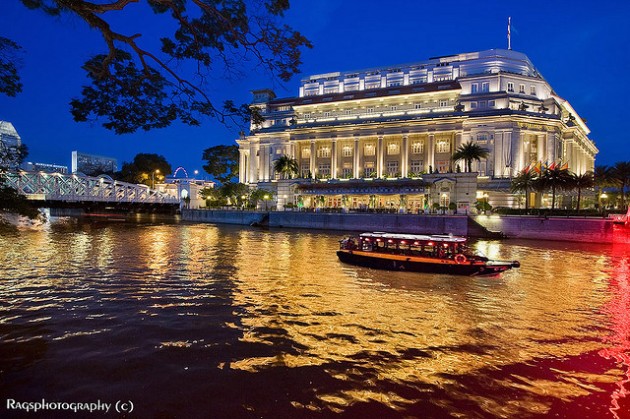In a way, a river’s estuary is its final definitive feature. It is a reflection of the past; its contents are a symbol of its erosive and depositional powers. Metaphorically speaking, I find myself at the end of a river – for I am a Hougang boy, and have been so for all my life.
Considering the etymology of ‘Hougang’ (which is Teochew for ‘river’s end’), I figuratively find myself at a river’s estuary because spending my most formative years in Hougang has certainly had an arguably noticeable impact on my perceptions and thoughts regarding certain issues.
Having fancied politicking for a good number of years now, life in Hougang not only involved being aware of municipal issues of the day but also the broader political significance of the area. In and by itself, Hougang is a geographically small area but due to the past actions of the Electoral Boundaries Review Committee (EBRC) appointed by the Prime Minister, some residents have found themselves living in one constituency whilst others have found themselves living a completely different one. As of 2011, the area had been split up into at least 4 constituencies – Hougang SMC, Bedok Reservoir – Punggol (of Aljunied GRC), Ang Mo Kio – Hougang (of Ang Mo Kio GRC) and Punggol South (of Pasir Ris – Punggol GRC). The intention of such awkward delimitation has been famously attributed to gerrymandering. So when a PAP MP came knocking on my door one day asking if I had any concerns about lift upgrading in Punggol South, I felt like telling him that I did have a bone to pick with that issue not just in my constituency but all across Hougang as well. I felt that it was unfair that residents of Hougang Street 51 could enjoy priority in national residential development programmes set up by the Housing and Development Board (HDB) whilst my fellow Hougang residents just a few roads down were denied that because of whom they voted for in the political process.
Equally, I daresay constituents of Hougang SMC have developed a sense of patriotism as well as a political identity that are unique to their neck of the woods. For every General Election from 1991 to 2011, the electors there were branded as political kingmakers in deciding whether there would be any Opposition representation in Singapore’s legislature. On the one hand, the Opposition hailed the people of Hougang SMC as having a broader national duty whilst on the other hand, the incumbent Government party told Hougang residents that they would have a special place in the hearts of policy planners if and only if the PAP candidate had been elected. With a spotlight as bright as that in such a small area (made brighter by the by-election of 2012), one can only expect the people of Hougang to have a distinct identity of their own as far as political preferences go.
Thus, the geography of place and space is rather intriguing. It is apparent in the differences between living in a younger area like Punggol 21 as opposed to an older one like Mountbatten or those between living in an area further away from the Central Business District (CBD) like Sembawang rather than a place within walking distance of it such as Tanglin-Cairnhill. Hence, the variation of Singaporeans’ spatial identity is due to many reasons such as differences in socioeconomic status of residents, the age of the estates as well as the amenities and infrastructure available. In the case of Hougang, it just so happens that this variation has manifested itself in a political nature.
In any case, however, it can be concluded that people are shaped by their surroundings. The link between urban zoning and psychological perceptions is perhaps something that warrants further research by those well-versed with the social sciences.
As for me, nostalgia hit when I had to shift from Hougang to Sengkang in early 2013, assuming that my childhood home would forever remain as a collection of mere memories somewhere in the inner recesses of my mind. Rather ironically, however, the recent election of the Workers’ Party (WP) candidate in the 2013 Punggol East by-election has meant that local affairs in my new neighbourhood will now be managed together with those in the WP stronghold of Hougang. And so, the delta has expanded and I yet again find myself in this estuary known as Hougang.
“Places matter. Their rules, their scale, their design include or exclude civil society, pedestrianism, equality, diversity (economic and otherwise), understanding of where water comes from and garbage goes, consumption or conservation. They map our lives.”
― Rebecca Solnit, Storming the Gates of Paradise: Landscapes for Politics

Pingback: Daily SG: 17 Jun 2013 | The Singapore Daily
Reblogged this on urbanculturalstudies.